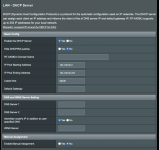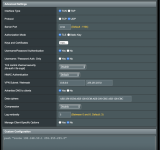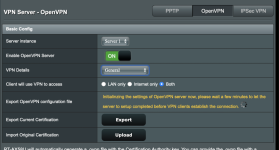torstein
Senior Member
Guys, I've googled for days and read many tutorials, tried different solutions but I cannot see my local shares on my lan when connecting remotely through openvpn. I've searched the snb-forum, but can't find a solution. When remotely connected through the openvpn, I can only log-on to my routers interface and use the internet, but I cannot see any of my shared folders and other macs on the lan. What am I doing wrong?
Setup:
- macOS Big Sur 11.2.3
- Asus AX58U
- Asuswrt-Merlin 386.2
- Tunnelblick and OpenVPN Connect apps
I've read that I have to make sure my vpn and lan is on the same subnet, but I don't understand how I'm supposed to "make sure" of that, and I can't find any place to configure that. Many of the tutorials also often is based on older merlin-firmwares, and has different options and layout, sadly, making it all the more confusing.
Can someone please help?
Attached photos of my DCHP server settings, and openvpn-settings.
Setup:
- macOS Big Sur 11.2.3
- Asus AX58U
- Asuswrt-Merlin 386.2
- Tunnelblick and OpenVPN Connect apps
I've read that I have to make sure my vpn and lan is on the same subnet, but I don't understand how I'm supposed to "make sure" of that, and I can't find any place to configure that. Many of the tutorials also often is based on older merlin-firmwares, and has different options and layout, sadly, making it all the more confusing.
Can someone please help?
Attached photos of my DCHP server settings, and openvpn-settings.
Attachments
Last edited:




